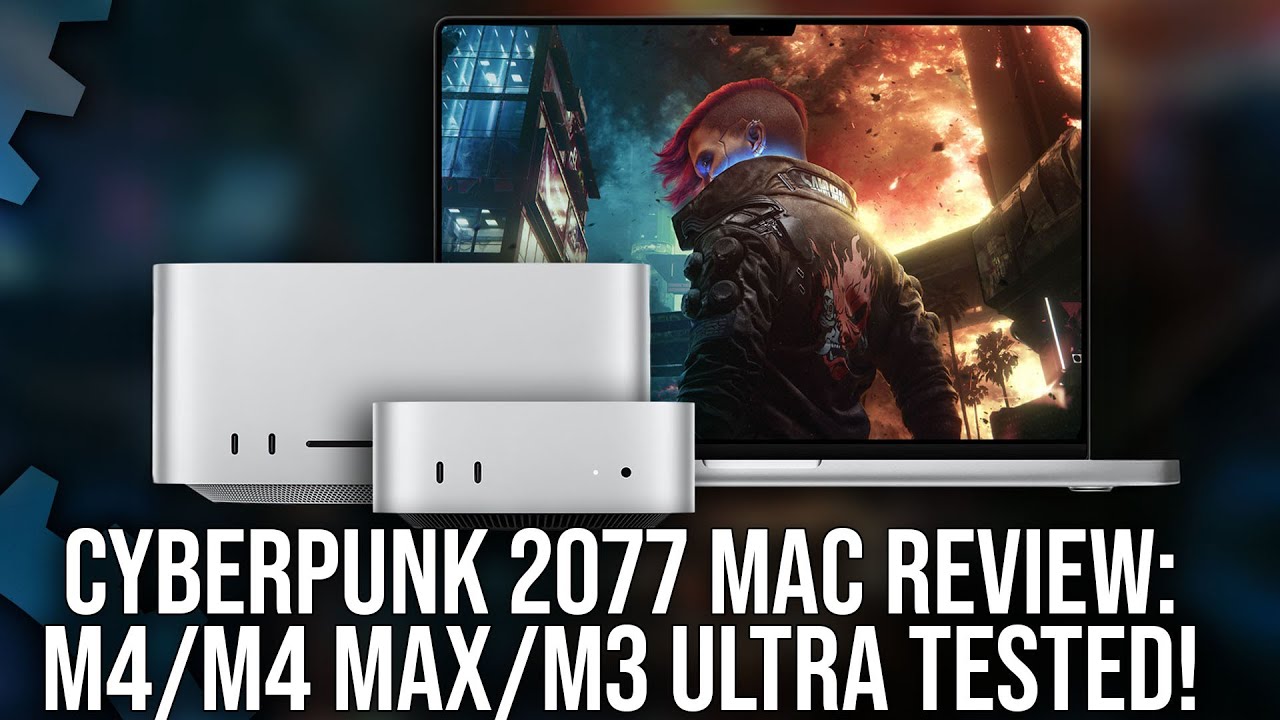Cyberpunk 2077 on Apple Silicon Macs delivers a smooth and visually impressive experience with strong performance, especially on higher-end M series chips, leveraging Metal Effects and efficient shader management while offering competitive rasterized graphics compared to mid-range PC GPUs. Although ray tracing quality lags behind PC counterparts, the Mac version benefits from excellent HDR support, power efficiency, and seamless integration with Apple technologies, making it one of the best AAA gaming experiences available for Mac users.
Cyberpunk 2077 has finally arrived on Apple Silicon Macs nearly five years after its original release, bringing with it promises of ray tracing support and advanced Metal Effects features. The Mac version is straightforward to use, booting without issues on devices like the M4 Max MacBook Pro and presenting a settings menu similar to the PC version. It supports any M series Mac chip with at least 16 GB of RAM, excluding 8 GB machines and Intel-based Macs. Testing on three machines—the M4 Mac Mini, M4 Max MacBook Pro, and M3 Ultra Mac Studio—showed that shader compilation occurs rapidly during initial loading but causes minimal stutter during gameplay, indicating an effective shader management system.
Performance-wise, the game defaults to a “for this Mac” graphics preset that adjusts settings based on the chip. On the M4 Max MacBook Pro, ultra settings at 1440p with Metal Effects upscaling generally maintain a smooth 60fps, though occasional stutters and frame drops occur during open-world traversal and heavy combat. Adjusting Metal Effects to performance mode helps alleviate these issues somewhat. Metal Effects temporal upscaling proves to be a strong visual enhancement, offering performance boosts up to nearly double compared to native 4K rendering, and it competes favorably with PC upscalers like AMD’s FSR and Nvidia’s DLSS, especially at higher resolutions.
However, ray tracing performance and image quality on Macs are less impressive. While Metal Effects combined with ray reconstruction helps clean up visuals, reflections and lighting can appear splotchy and shimmering, highlighting limitations compared to PC ray tracing solutions. Apple plans to introduce a machine learning-based denoiser in Mac OS 26, which may improve ray tracing visuals in the future. Despite these drawbacks, Cyberpunk on Mac benefits from excellent HDR support on the internal display, smooth integration of HDR and SDR content, and features like spatial audio with headtracking exclusive to Apple devices. Battery life on the MacBook Pro during gaming is solid, lasting over an hour on full brightness, thanks to Apple’s efficient system-on-chip design.
Comparing Mac performance to PC hardware reveals that the M4 Max MacBook Pro roughly matches an Nvidia RTX 4060 in rasterized performance but falls slightly behind when ray tracing is enabled. The M3 Ultra chip outperforms the M4 Max by 35-41% in most tests, positioning it between the RTX 4060 and 5060 Ti in rasterized settings but aligning closer to the 4060 with ray tracing. The Mac Mini, with fewer GPU resources, trails significantly behind even modest discrete GPUs like the AMD RX6600. Still, it outperforms integrated graphics solutions like the Steam Deck by a notable margin. Overall, Macs offer impressive power efficiency and thermal management compared to similarly performing PC hardware.
In conclusion, Cyberpunk 2077 on Mac is a well-executed port that leverages Apple-specific technologies and avoids many common pitfalls of previous Mac ports. While some initial performance hitches are present, the game runs smoothly for the most part and offers a straightforward, console-like experience free from driver issues and hardware compatibility concerns common on Windows. The Mac hardware delivers competitive performance for rasterized gaming with exceptional power efficiency, long battery life, and high-quality displays. For Mac users with compatible hardware, this iteration of Cyberpunk 2077 represents one of the best AAA gaming experiences currently available on the platform.
